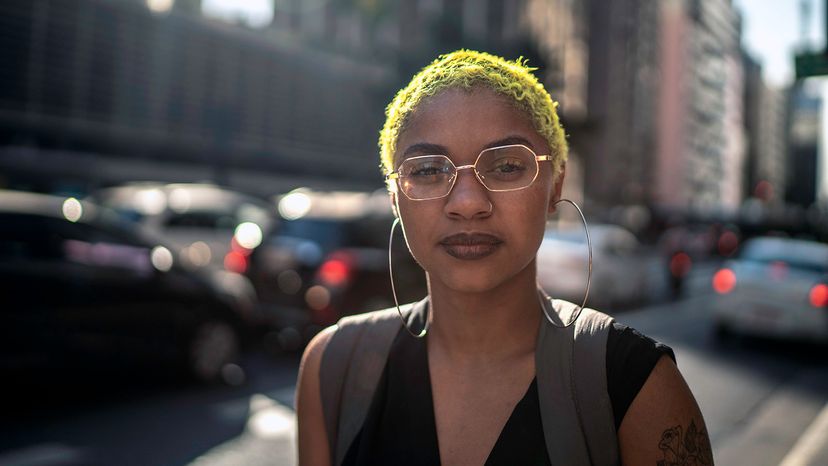 “Black women who used permanent hair dyes every five to eight weeks or more had a 60 percent higher risk of breast cancer, compared to white women who had an 8 percent increased risk. FG Trade/Getty Images
“Black women who used permanent hair dyes every five to eight weeks or more had a 60 percent higher risk of breast cancer, compared to white women who had an 8 percent increased risk. FG Trade/Getty Images
With all the unknowns that exist around breast cancer (and most cancers for that matter), it’s generally safe to say that the disease doesn’t result from a single behavior, food, habit or action. A complex combination of genetic and environmental factors contributes to the development of breast cancer in certain individuals, and scientists continue to seek out answers around which factors could be controlled, monitored or even eliminated.
Now a study from researchers at the National Institutes of Health (NIH) suggests that permanent hair dye may be one of those factors that increases the risk of breast cancer, and should receive some further examination.
The study, published online in December 2019 in the International Journal of Cancer, details how scientists at the National Institute of Environmental Health Sciences (NIEHS), part of NIH, discovered that regular use of permanent hair dye was tied to an overall 9 percent increase in breast cancer risk.
The statistics were especially significant in African American women: Those who used permanent dyes every five to eight weeks or more had a 60 percent higher risk of breast cancer, compared to white women who had an 8 percent increased risk. Semi-permanent and temporary dyes didn’t seem to have this effect. Researchers say use of these dyes resulted in little to no increase in risk.
"Researchers have been studying the possible link between hair dye and cancer for a long time, but results have been inconsistent," corresponding author Alexandra White, Ph.D., head of the NIEHS Environment and Cancer Epidemiology Group, said in a press release. "In our study, we see a higher breast cancer risk associated with hair dye use, and the effect is stronger in African American women, particularly those who are frequent users."
For the NIH study, researchers used data from 46,709 women who participated in the Sister Study, which included more than 50,000 women across the U.S. and Puerto Rico, from 2003 to 2009. The participants of the Sister Study were all between the ages of 35 and 74 and each had a sister who had been diagnosed with breast cancer. The idea is that because sisters typically share the same environment, genes and experiences, researchers may stand a better chance at pinpointing risk factors and developing effective cancer prevention strategies.
But permanent hair dye was only part of the equation: Researchers also found that chemical hair straighteners were associated with an increased breast cancer risk. The data revealed that women who used hair straighteners every five to eight weeks or more were about 30 percent more likely to develop breast cancer, as well. Straighteners were used much more frequently among the African American participants, but the association between the product and increased breast cancer risk was similar in both African American and white women.
So does this mean permanent hair dye and chemical hair straighteners should be strictly banned from regular use? Researchers aren’t sure. Experts say further investigation is necessary to replicate the results, and in the meantime, women should keep in mind that cancers usually can’t be explained by the involvement of one single factor. But those who are concerned may want to re-evaluate their cosmetic routines.
"We are exposed to many things that could potentially contribute to breast cancer, and it is unlikely that any single factor explains a woman’s risk," co-author Dale Sandler, Ph.D., chief of the NIEHS Epidemiology Branch, said in a statement. "While it is too early to make a firm recommendation, avoiding these chemicals might be one more thing women can do to reduce their risk of breast cancer."
Now That’s Scary
A 2018 study published in the journal Environmental Research tested 18 hair products commonly used by black women and found that many of them contained endocrine-disrupting chemicals, or substances that are known to interfere with the body’s hormones. Product labels failed to list 84 percent of the chemicals identified during testing.



























